Menus
- Racing motorcycle for the road
- 78 hp at 98 kg
- Battery instead of alternator
- Slide start and special stand
- Tropic like an ocean liner
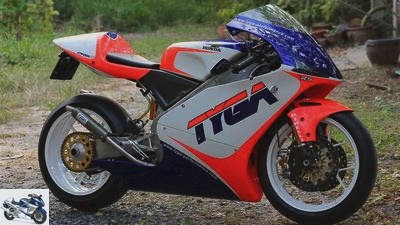
TYGA performance
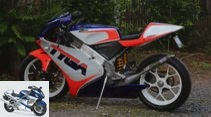
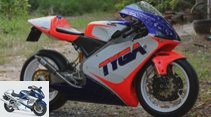
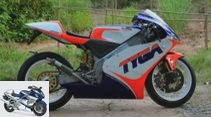
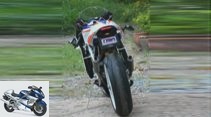
34 photos
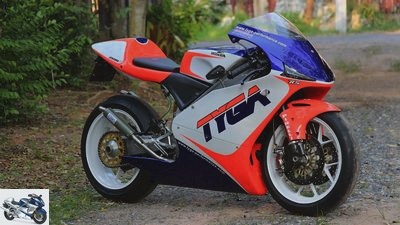
TYGA performance
1/34
In the 1990s, the Honda RS250R was a hot topic in the 250cc Grand Prix class.

TYGA performance
2/34
In 2018, two Thai entrepreneurs converted one of them for road use.
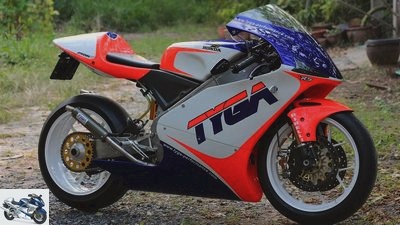
TYGA performance
3/34
Behind the company are the two British exiles Paul Pearmain and Matt Patterson.
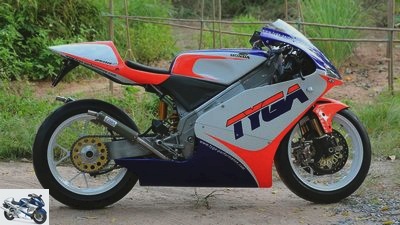
TYGA performance
4/34
The two usually form racing bikes with their parts from street motorcycles, the way with the project TYGA Street NX-5 RS250R-S ran exactly in the other direction.
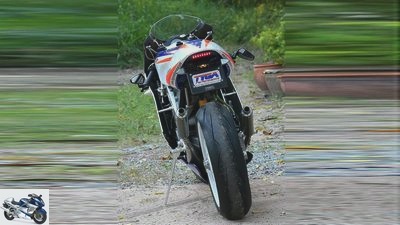
TYGA performance
5/34
Here, a real GP machine was supposed to be turned into a street legal motorcycle (in Thailand). Why? Just for fun.
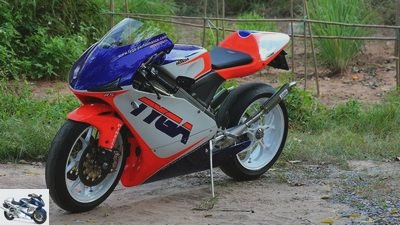
TYGA performance
6/34
The starting point was a 1993 RS250R (NX5) in miserable condition without fairing and attachments.
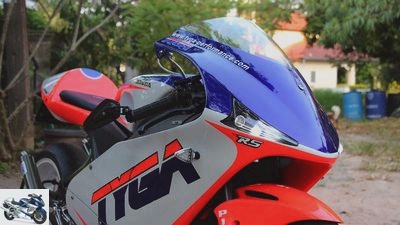
TYGA performance
7/34
There are LED headlight elements in the front panel.

TYGA performance
8/34
The footrest system was newly made.
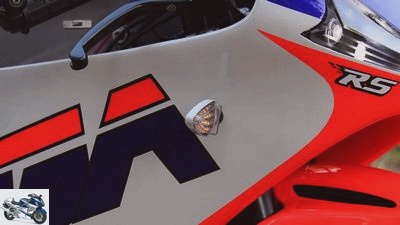
TYGA performance
9/34
LED mini indicators indicate the direction of travel.
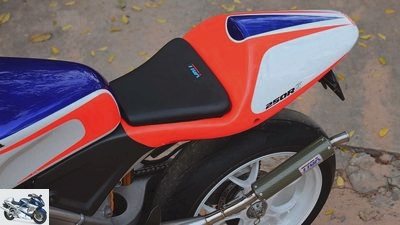
TYGA performance
10/34
Newly adapted seat hump of an NSR.
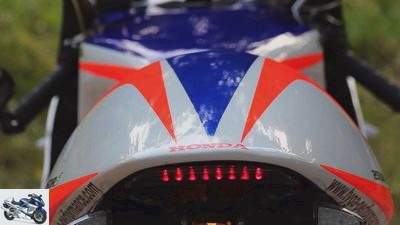
TYGA performance
11/34
An LED rear light has been integrated into the rear.
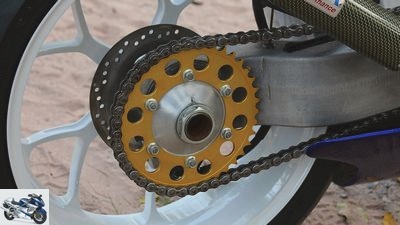
TYGA performance
12/34
Final drive without shock absorber.
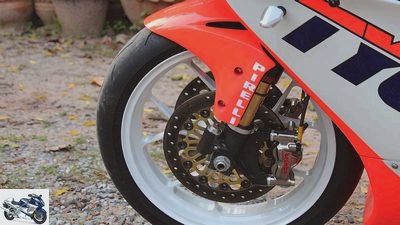
TYGA performance
13/34
The fork and brake system are from a current GP bike.
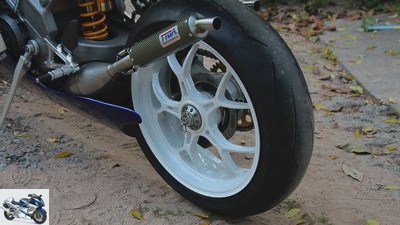
TYGA performance
14/34
The ancient magnesium racing rims have been replaced by new forged aluminum rims.
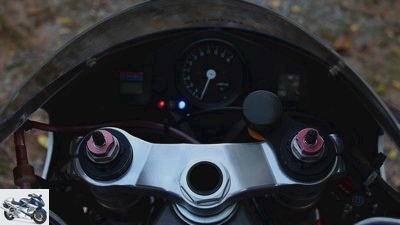
TYGA performance
15/34
Retrofitted indicator lights in the cockpit.
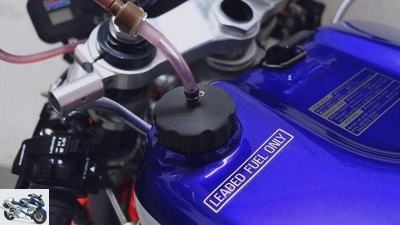
TYGA performance
16/34
Nothing with lead-free.
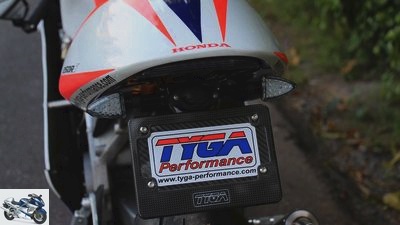
TYGA performance
17/34
Rear with LED indicators and license plate holder.
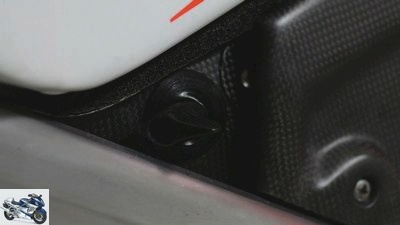
TYGA performance
18/34
Fuel tap from the 3D printer.
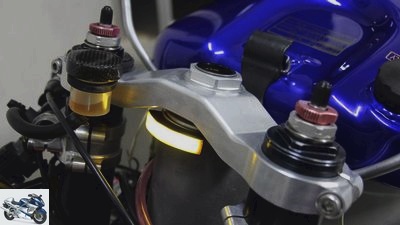
TYGA performance
19/34
Indirect instrument lighting in front of the steering head.
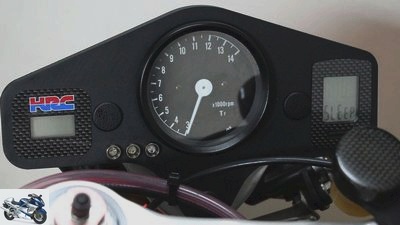
TYGA performance
20/34
A retrofitted bicycle speedometer shows the speed.

TYGA performance
21/34
The carburetors were embedded in an air box with a filter element.
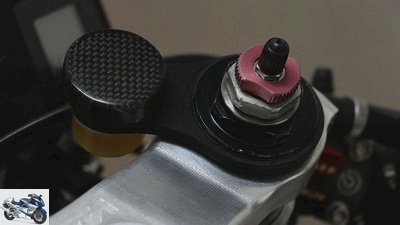
TYGA performance
22/34
Expansion tank attached to the fork bridge.
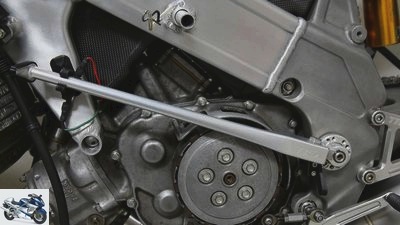
TYGA performance
23/34
The side stand was placed next to the engine.
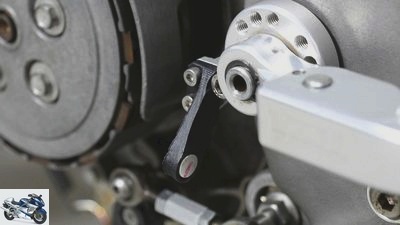
TYGA performance
24/34
It was articulated on the front swing axle.
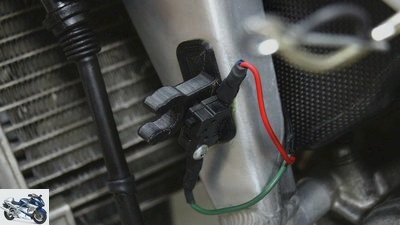
TYGA performance
25/34
Even an ignition breaker was thought of.
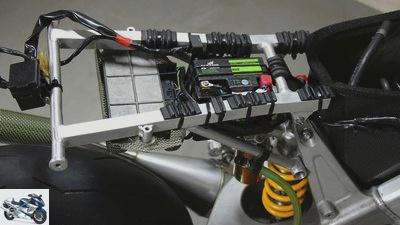
TYGA performance
26/34
The battery as an energy source is located under the driver’s seat.
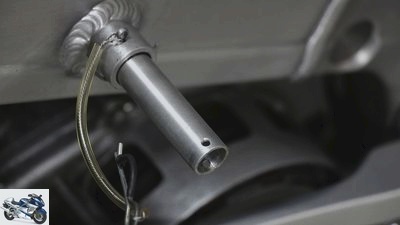
TYGA performance
27/34
In order to fold the side stand out or in, the side panel must be loosened.
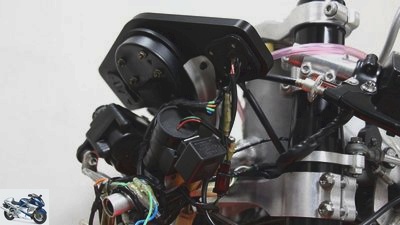
TYGA performance
28/34
Retrofitted on-board electrics.
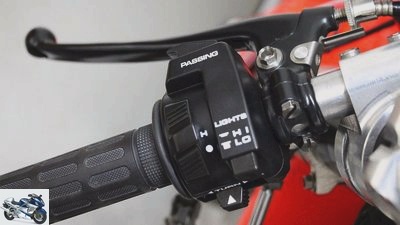
TYGA performance
29/34
The handlebar fittings come from the Honda shelf.
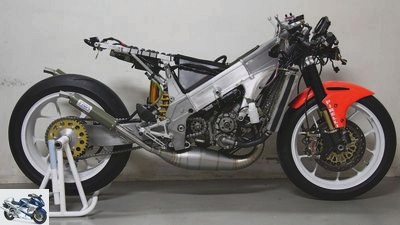
TYGA performance
30/34
The two-stroke engine has around 78 hp and a dry weight of 98 kilograms.
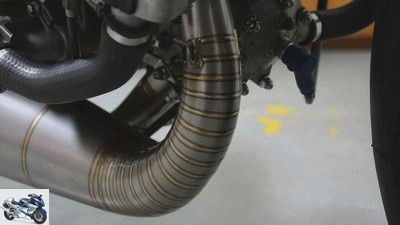
TYGA performance
31/34
Hand-welded stainless steel exhaust system.
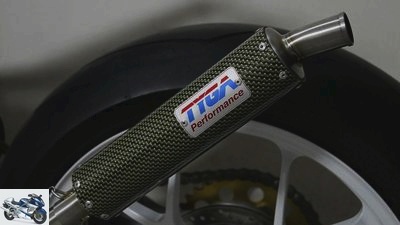
TYGA performance
32/34
Kevlar rear silencer.
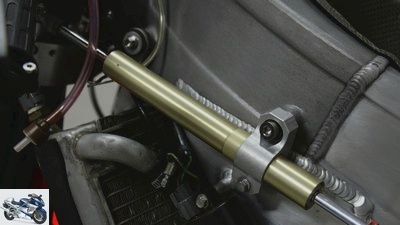
TYGA performance
33/34
Retrofitted steering damper.
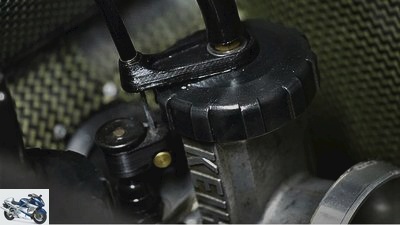
TYGA performance
34/34
Remote-controlled choke on the racing carburettors.
TYGA Street NX-5 RS 250 R-S
Racing motorcycle for the road
In the 1990s, the Honda RS 250 R was a very hot topic in the 250 Grand Prix class. In 2018, two Thai entrepreneurs converted one of them for road use.
TYGA Performance resides in Thailand and sells motorcycle and motorsport parts through its online shops worldwide. Behind the company are the two British exiles Paul Pearmain and Matt Patterson. And because both of them are also ex-racing drivers, they love old GP bikes.
78 hp at 98 kg
The two usually form racing bikes with their parts from street motorcycles, the way with the project TYGA Street NX-5 RS 250 R-S was exactly in the opposite direction. Here, a real GP machine was supposed to be turned into a street legal motorcycle (in Thailand). Why? Just for fun.
The starting point was a 1993 RS 250 R (NX5) in miserable condition without fairing and attachments, i.e. not a motorcycle that would make a collector sweat. The output of the quarter-liter two-cylinder unit is around 78 hp, which in the two-stroke engine only weighs 98 kilograms dry.
Battery instead of alternator
The conversion for the street should be minimalist and reversible. It quickly became clear that a second cable harness would be drawn in for the necessary additional electrics.
TYGA performance
Instead of an alternator: battery under the seat.
Because the entire lighting is based on economical LED lights and the TYGA Street NX-5 RS 250 R-S was also not intended to be a long-distance bike, it was decided not to adapt an alternator. A lithium-ion battery under the driver’s seat must be sufficient as an energy source. The handlebar fittings come from the Honda standard kit, an ignition lock has been completely omitted. There is a horn and a cockpit display that has been expanded to include a bicycle speedometer, indicator lights and indirect instrument lighting.
The carburettors, which were otherwise allowed to breathe in without a filter, were integrated into an airbox with a filter element for reasons of engine durability. A choke remote control and a modified fuel tap were also required. The small parts built in for this were created in the 3D printer.
Slide start and special stand
For a visit to the ice cream parlor, however, a plain side stand is also essential. Due to the lack of articulation points on the frame and the single-sided swing arm on the front swing arm axis, it is adapted to lie next to the engine when at rest. Even an ignition interruption when the stand is folded out has been thought of. If the stand is folded in or out, however, a quick release fastener on the side panel must be released.
TYGA performance
The side stand sits next to the engine.
Matt and Paul are still unsatisfied with the start-up procedure. Because a kick starter interferes with the engine housing and an electric starter requires a lot of weight and a larger battery, the classic push start is the same.
The USD fork together with the Brembo radial brake system comes from a current GP machine. The clamped steering stub and the milled fork bridges have been adapted to this. The hindquarters are cushioned and cushioned by an Ohlins strut. The 25-year-old magnesium racing rims have been replaced by forged aluminum wheels measuring 3.5 x 17 at the front and 5.5 x 17 at the rear. Numerous titanium screws and bolts keep the weight in check.
Tropic like an ocean liner
A hand-welded stainless steel exhaust system with Kevlar dampers reduces the GP sound to a tolerable level. The missing fairing was replaced by a mix of Suzuki RGV 250 parts and Honda NSR components made of carbon fiber-kevlar laminate.
After a first test drive, the makers were enthusiastic. Hard as a board, absolutely direct – just like a GP machine. What is really annoying, however, is the slight steering angle, which makes turning maneuvers impossible even on a two-lane road.
By the way, those who want to do the conversion can find all the parts in the TYGA shop.
Related articles
-
Harley-Davidson Street Glide and Honda Gold Wing F6B put to the test
Gargolov 31 photos Gargolov 1/31 Shortened at the front as if with a scythe, at the back as if compressed with a hammer: excavators look strangely…
-
Hobby motorcycle Honda CB 900 F Bol d ?? Or
Art 26 pictures Art 1/26 Art 2/26 Art 3/26 Art 4/26 Art 5/26 Art 6/26 Art 7/26 Art 8/26 Art 9/26 Art 10/26 …
-
Honda 18th photos Honda 1/18 Honda RC213V-S. Honda 2/18 Honda RC213V-S. Honda 3/18 Honda RC213V-S. Honda 4/18 Honda RC213V-S. Honda 5/18 Honda RC213V-S….
-
Car versus motorcycle: Skoda Octavia WRC versus KTM 525 EXC Racing in rally test
wolf Car versus motorcycle Skoda Octavia WRC versus KTM 525 EXC Racing in rally test When a World Rally Car and a KTM 525 EXC, i.e. off-road driving…
-
Kawasaki Vulcan S, Honda CTX 700 N and Harley-Davidson Street 750
33 pictures 1/33 Kawasaki Vulcan S. 2/33 Kawasaki: Not chic, but functional. Tachometer good, digital speedometer …
-
Comparison test Honda Hornet 600 ABS, Kawasaki Z 750 ABS and Triumph Street Triple
Artist comparison test Honda Hornet 600 ABS, Kawasaki Z 750 ABS and Triumph Street Triple Weekend Warriors Life is almost sterile. Engines…
-
Comparison between series and racing motorcycle
Comparison between series and racing motorcycle mating season Be praised what makes you fast. But what actually makes really fast? Four couples have lined up, …
-
Triumph Street Triple R, Honda Hornet 600 and Ducati Monster 1100 Evo in the test
fact 17th photos fact 1/17 The Triumph Street Triple R, Honda Hornet 600 and the Ducati Monster 1100 Evo compete against each other. Which of them is the…
-
Technology 20 years of progress in motorcycle construction: Honda Fireblade – old against new
fact 14th photos fact 1/14 At the end of 1991 Honda presented the first Fireblade and shook the athlete Olympus permanently. We compare the Fireblade SC…
-
Honda CBR 1000 RR-R Fireblade: radical declaration of war with 217 hp
New items 2020 Top topic Jorg Kunstle 39 photos Honda 1/39 With the new Fireblade, Honda consistently focuses on racetrack performance. Honda 2/39 Ready…